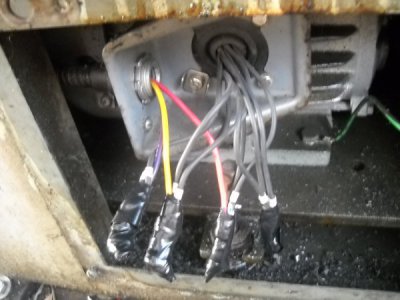4
4GSR
Forum Guest
Register Today
As the title says, "What method do you use for making your motor connections?" I'm refering to promarly for 1 HP and larger motors, single and 3-phase, excluding stepper motors or any motors that have it's own kind of connectors.
The method I use, taught by my dad, is to use ring terminals on all motor leads and line wires coming into the pecker head. Connections are bolted with stainless or brass screws and nuts. Cover the connection with Scotch 2242 rubber electrical tape. Last a layer of Scotch 33 or 88 vinyl electrical tape.
Who wants to go next?

The method I use, taught by my dad, is to use ring terminals on all motor leads and line wires coming into the pecker head. Connections are bolted with stainless or brass screws and nuts. Cover the connection with Scotch 2242 rubber electrical tape. Last a layer of Scotch 33 or 88 vinyl electrical tape.
Who wants to go next?





